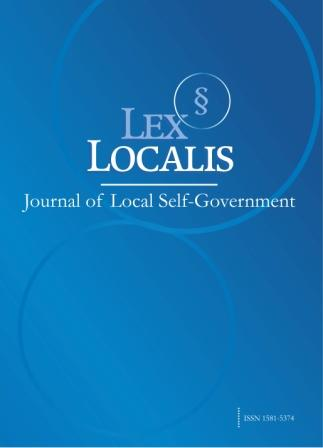A study of the criminal law analysis of corporate criminal behavior in a data-driven environment
DOI:
https://doi.org/10.52152/800035Keywords:
corporate criminal behavior; data-driven environment; spatial spillover effect; Dubin model; criminal lawAbstract
Taking corporate criminal behavior as an entry point, this study explores the push effect of data-driven environment on corporate criminal behavior and its spatial spillover effect. Based on the data of corporate criminal behavior in Chinese cities at all levels and above, multiple matrix models are constructed and empirically tested using the spatial Durbin model. The results show that data-driven environments have a significant push effect on corporate criminal behavior by affecting the expected benefits and costs of crime, and also produce positive spatial spillover effects. For every 10% increase in the level of data-driven environment deepening, the number of corporate criminal behavior will increase by 8.96%. In addition, this effect also shows directionality, with a coefficient of 0.867 for Variable 1 in underdeveloped regions under the data-driven environment and a direct effect of 1.009 for Variable 2 in developed regions, with more pronounced positive spatial spillover effects from developed regions to less developed regions. This study proposes legal system recommendations on strengthening criminal law regulation in data-driven environments, establishing cross-regional criminal law cooperation mechanisms, and implementing differentiated criminal law policies, which can help to improve the legal system and enhance the relevance and effectiveness of the law, and better prevent and combat corporate criminal behavior.
References
Fahim, M. H. K. (2021). Exploring the Threats of Corporate Crime as a Rising Trend of White Collar Crime in Bangladesh: An Empirical Study in the Light of Criminal Law. Journal of Asia Pacific Studies, 6(1).
Jaspers, J. D. (2020). Strong by concealment? How secrecy, trust, and social embeddedness facilitate corporate crime. Crime, Law and Social Change, 73, 55-72.
Davies, J. (2022). Criminogenic dynamics of the construction industry: a state-corporate crime perspective. Journal of White Collar and Corporate Crime, 3(2), 90-99.
Maesschalck, J. (2021). Using Grid-Group Cultural Theory to assess approaches to the prevention of corporate and occupational crime: The EU as a natural experiment. In European White-Collar Crime (pp. 17-38). Bristol University Press.
Parker, M. J. (2023). Book Review: Measuring compliance–Assessing Corporate Crime and Misconduct. Edited by Melissa Rorie and Benjamin Van Rooij.
LieselotBisschop · YogiHendlin · JelleJaspers. (2022). Designed to break p1anned obso1escence as corporate environmenta1 crime. Crime, Law and Social Change, 1-23.
Meerts, C. A. (2023). The private policing of economic crime–corporate investigations and settlements. Journal of economic criminology, 1, 100016.
Shabir, K. . (2024). The corporate 'failure to prevent' principle in the uk bribery act 2010: philosophical foundations of economic crime. Statute Law Review(1), 1.
Nam, S. M. . (2020). A study on the practical measures of the corporate crime investigation -focusing on white color crime-. The International Journal of Advanced Culture Technology, 8, 96-100
Sinaga, H. D. P., & Bolifaar, A. H. (2020, March). Blockchain Adoption for Plea Bargaining of Corporate Crime in Indonesia. In Proceedings of the 2020 2nd International Conference on Blockchain Technology (pp. 115-119).
Holzman, E. R., Miller, B. P., & Williams, B. M. (2021). The local spillover effect of corporate accounting misconduct: Evidence from city crime rates. Contemporary Accounting Research, 38(3), 1542-1580.
.Golden, J. (2021). Local crime environment and corporate financial misconduct using Benford's law. Journal of Forensic Accounting Research, 6(1), 436-460.
Schoultz, I., & Flyghed, J. (2020). Denials and confessions. An analysis of the temporalization of neutralizations of corporate crime. International Journal of Law, Crime and Justice, 62, 100389.
Chan, F. , Gibbs, C. , Boratto, R. , & Speers, M. . (2021). Understanding transnational bribery: a corporate crime framework. Crime, Law and Social Change, 75(3), -.
Wikström, P. O. H., & Kroneberg, C. (2022). Analytic criminology: Mechanisms and methods in the explanation of crime and its causes. Annual Review of Criminology, 5(1), 179-203.
Snider, L. (2020). Beyond Trump: Neoliberal capitalism and the abolition of corporate crime. Journal of White Collar and Corporate Crime, 1(2), 86-94.
Chen, B. (2021). Research on Personal Data-Related Crime in China. Open Journal of Social Sciences, 9(9), 17-30.
Lee, H. H. , & Jung, H. . (2021). Analysis of the effects of corporate crime on the press - focusing on changes in stock prices according to types of corporate crime -. Criminal Investigation Studies.
Shyrokova-Murarash, O. , & Akchurin, Y. . (2023). Cybercrime and cyberterrorism as a threat to information security: international legal aspect. INFORMATION AND LAW.
Gupta, C. M., & Kumar, D. (2020). Creative accounting a tool for financial crime: a review of the techniques and its effects. Journal of Financial Crime, 27(2), 397-411.
Younies, H., & Na, T. (2020). Effect of cybercrime laws on protecting citizens and businesses in the United Arab Emirates (UAE). Journal of Financial Crime, 27(4), 1089-1105.
Downloads
Published
Versions
- 2025-08-11 (2)
- 2025-11-07 (1)
Issue
Section
License
Copyright (c) 2025 Lex localis - Journal of Local Self-Government

This work is licensed under a Creative Commons Attribution-NonCommercial-NoDerivatives 4.0 International License.








